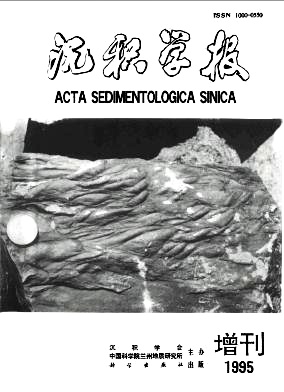Sedimentary Microfacies and Environments of Eocene Zhepure Formation in Gamba District, Xizang
- Publish Date: 1995-12-10
-
Key words:
- sedimentary microfacies /
- environment /
- open remnant ocean /
- Xizang
Abstract: The highest marine sediments discovered in Xizang untill now are the lower Tertary Eocene, among them the marine Eocene with better developed stratigraphic sequence is exposed in Gamba of south Xizang and was studied in detail. According to the foraminifera assemblage the upper member of Zhepure Formation may reach to early Late Eocene.The lower member of Zhepure Formation in study site is composed of bioclastic limestone, characterized by abundant large benthic foraminifera and calcareous algae. The lower member of the formation is mainly calcareous mudstone and silt. Based on the rock composition, texture and fossil of the limestone in Zhepure Formation, 8 micro factes are classified: bioclastic oolitic grainstone (MFI), oolitic bioclastic grainstone (MF2), sandy bioclastic oolitic grainstone (MF3), bioclastic packstone (MF4), bioclastic wackestone (MFS), bioclastic mudstone (MF6), muddy mudstone (MF7) and bioclastic marl (MFS). On the basis of factes analysis, it is inferred that Zhepure Formation formed in coastal-neritic environments including: (1 ) intertidal shoal environment, (2) subtidal shallow water environment, and (3) subtidal deeper water environment. The depositional environments changed obviously from the early Eocene carbanate depositional environments to terrigenous elastics lagoon environments where seawater might freshen slightly from the begining of late Eocene.It is considered in the present literatures that the Eocene marine sediments formed in the remnant ocean basin under the background of collision between india plate and Eurasian plate. But it is shown that the remnant ocean basin is connected to the open Tethys Ocean, which belongs to open remnant ocean basin type on the studies of limestone microfacies and fauna of Zhepure Formation. The basin might be somewhat isolated from open ocean in late Early Eocene. Some sketchs of continent and ocean distribution were made on the distribution of the Eocene marine strata in Xizang. However, it is mentioned in the paper that the reconstruction of the paleo-oceanographic limits should taken the consideration of ennuence of the nappe structure because of the complex imbricate thrust.
| Citation: | Ji Lei. Sedimentary Microfacies and Environments of Eocene Zhepure Formation in Gamba District, Xizang[J]. Acta Sedimentologica Sinica, 1995, 13(S1): 88-95. |






 DownLoad:
DownLoad: